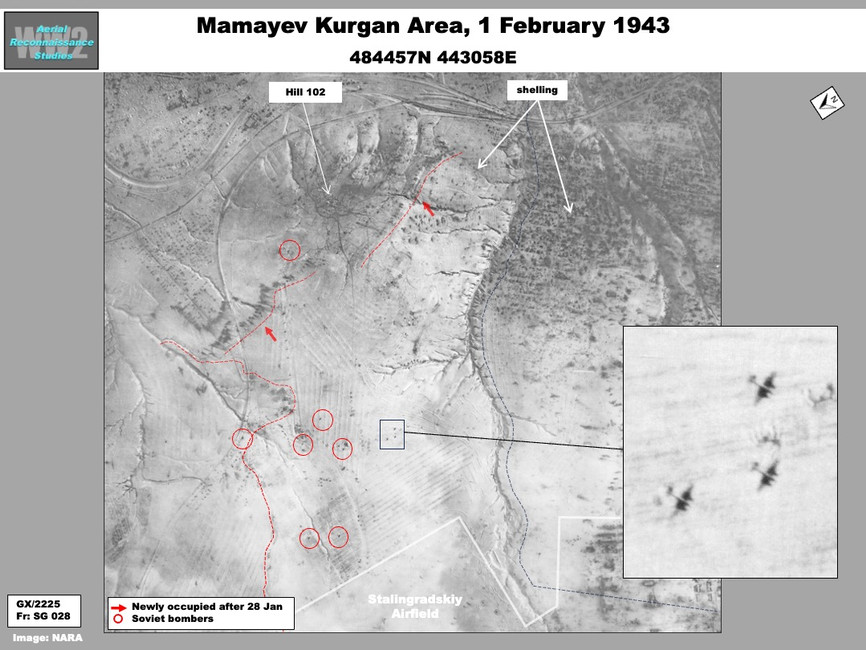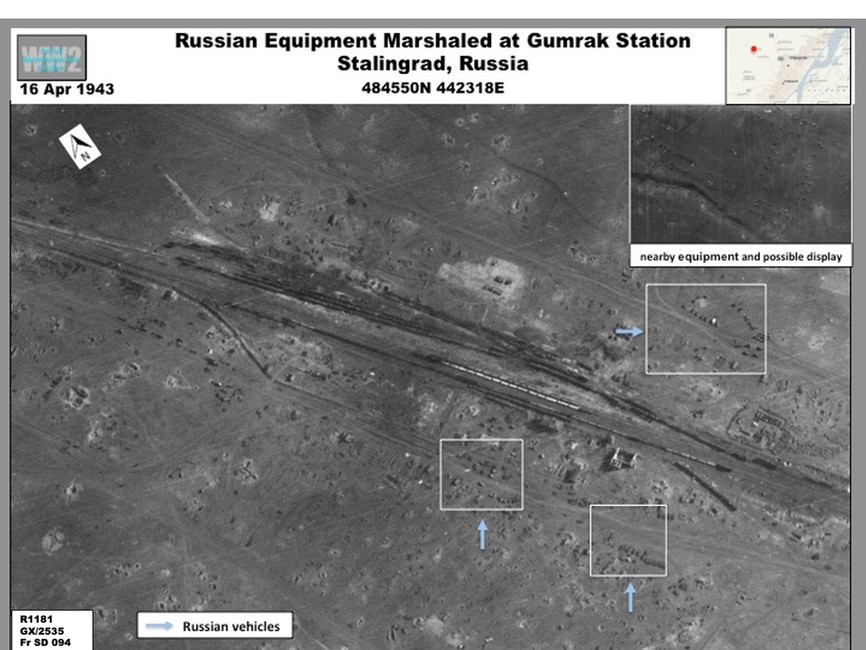WW2 AERIAL RECON STUDIES
Stalingrad, September 1942 - February 1943
Eastern Front
The arrival and demise of the German 6th Army at Stalingrad between September 1942 and February 1943 was well documented on Luftwaffe reconnaissance imagery. Coverage of these developments shows the Wehrmacht attacking the city, the final Soviet assault and the situation following the battle.
On 17 September 1942, the German forces were staging at Gumrack and Voroponovo Airfields outside the city which by then was under attack (Graphics). Luftwaffe Ju 88s could be seen providing ground support on the outskirts of the city (Graphic). On 10 October evidence of fighting was visible at the Red October Factory and at several locations to the northeast (Graphic).
The 6th Army took the city but 20 November was surrounded. A Luftwaffe airlift kept the army supplied until 23 January when the last flight left Stalingradskiy Airfield. Between 27 and 30 January German units had been isolated in three pockets; two in the south in the vicinity of Stalingradskiy (Graphic) and in the north at the Tractor Plant. The main body of the 6th Army surrendered on the 31st, but the northern pocket held out for two more days.
Coverage in and around the southern part of city on 28 January showed Soviet and German positions after the final assault began on the 27th (Graphic). On 1 February the path of the Red Army 284th Rifle Division could be traced over the Mamayev Kurgan heights (Hill 102) to positions facing German lines along a ravine (Graphics). At least ten Soviet bombers were flying overhead. Evidence heavy bombardment was observed in the nearby German pockets, but could also be seen west of the Red October and Barrikady Factories (Graphic) and especially around theTractor Plant (not shown).
With the battle over on 16 April 1943, derelict German aircraft and Soviet equipment could be seen in the vicinity of Gumrack Airfield and rail station (Graphics).









